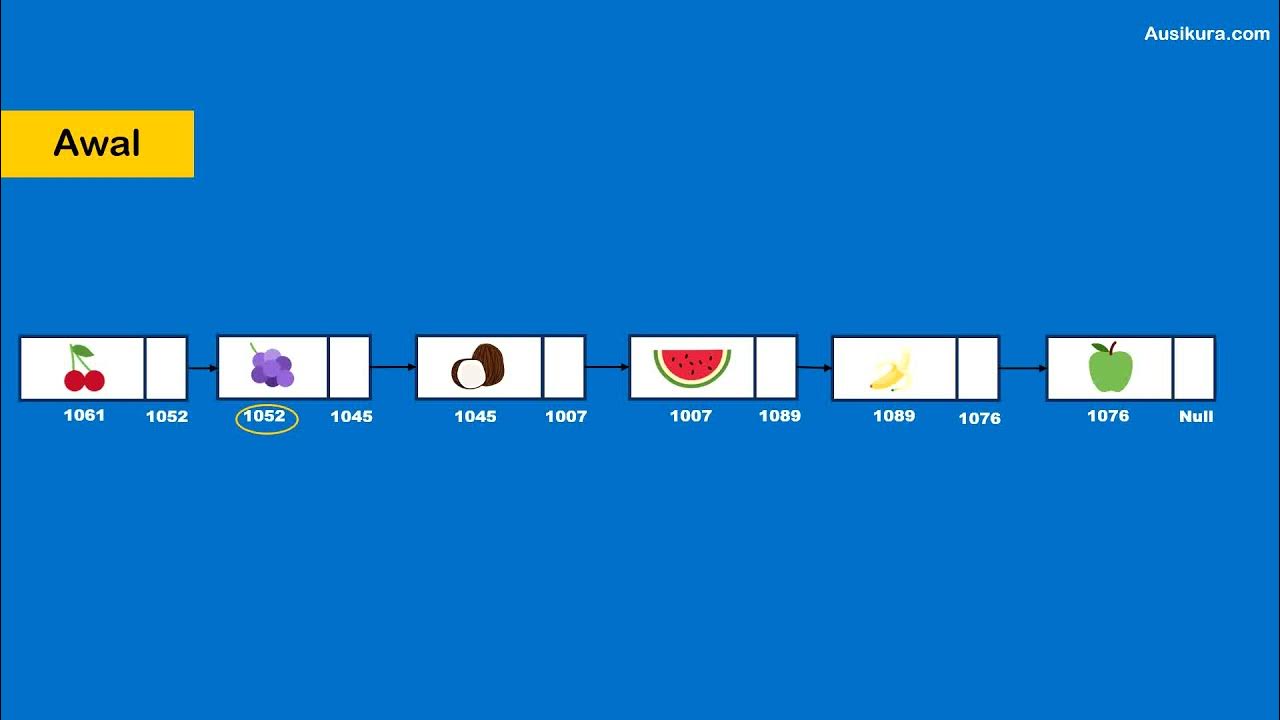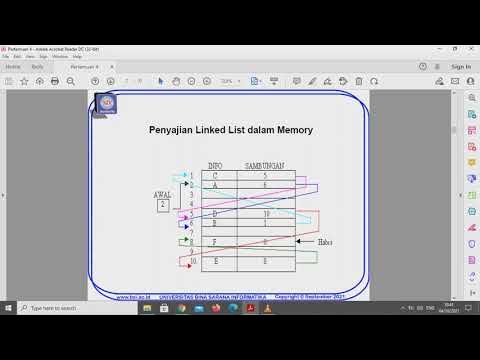ENTENDA LISTAS ENCADEADAS EM C EM POUCOS MINUTOS!
Summary
TLDRIn this tutorial, Wagner Hambo from WR Kids Channel explains how to work with linked lists in the C programming language. He provides a simple example of a singly linked list, showcasing how data is organized with pointers rather than contiguous memory allocation, unlike arrays. The video demonstrates key operations such as creating a node, adding data to the list, displaying the list, and freeing memory. Wagner also highlights the advantages of linked lists, like easier data insertion and removal. He promotes his C programming course, offering deeper insights into the language for beginners to advanced learners.
Takeaways
- 😀 A linked list in C is a dynamic data structure where data is not stored contiguously in memory, unlike arrays.
- 😀 A singly linked list consists of nodes with data and a pointer to the next node, while a doubly linked list has pointers to both the next and previous nodes.
- 😀 The video demonstrates a basic implementation of a singly linked list in C, with a simple node structure containing 8-bit data and a pointer to the next node.
- 😀 In the C code, memory for the node is allocated dynamically using `malloc`, and it checks if memory allocation is successful.
- 😀 The main advantages of linked lists include easier insertion and removal of data compared to arrays, especially when dealing with large datasets.
- 😀 Linked lists are non-sequential, so new elements can be inserted by simply changing the pointer to the next node, eliminating the need for shifting elements like in arrays.
- 😀 The tutorial shows how to create a new node, append data to the linked list, display the list content, and free the dynamically allocated memory.
- 😀 The function `CreateNode()` demonstrates memory allocation for a new node, and the `Append()` function adds nodes to the end of the list.
- 😀 A `while` loop is used to traverse the list, find the last node, and add new nodes after it, ensuring the last node points to `NULL` to mark the end of the list.
- 😀 The tutorial emphasizes that linked lists are a flexible and efficient way to handle dynamic datasets, particularly for applications that need frequent insertion or deletion of elements.
Q & A
What is a linked list in C programming?
-A linked list in C is a data structure where elements are not stored contiguously in memory. Each element contains data and a pointer to the next element, forming a chain. It allows dynamic memory allocation and easy insertion and deletion of elements.
What are the two types of linked lists discussed in the video?
-The video discusses two types of linked lists: singly linked lists and doubly linked lists. A singly linked list has elements that point to the next element, while a doubly linked list has elements that point to both the next and previous elements.
How does a singly linked list differ from an array in terms of memory allocation?
-Unlike arrays, which store elements contiguously in memory, a singly linked list stores elements non-contiguously, with each element containing a pointer to the next. This allows for dynamic memory allocation and easier insertion and deletion compared to arrays.
What is the purpose of the 'head' pointer in a linked list?
-The 'head' pointer in a linked list is used to point to the first element of the list. It is crucial for traversing the list and performing operations such as adding, displaying, or removing elements.
What function is used to add a new element to the end of a linked list?
-The function 'append' is used to add a new element to the end of a linked list. It creates a new node and links it to the last node of the existing list.
What happens if the list is empty when adding a new node?
-If the list is empty, the new node becomes the first node in the list. The 'head' pointer is updated to point to this new node.
How is memory allocated for a new node in a linked list?
-Memory for a new node is dynamically allocated using 'malloc'. If the memory allocation is successful, a pointer to the new node is returned; otherwise, an error is reported.
Why is it easier to insert or remove elements in a linked list compared to an array?
-In a linked list, elements are not stored sequentially, so no shifting of elements is required when inserting or deleting. Only pointers need to be updated, making these operations more efficient compared to arrays, where elements might need to be moved.
What does the 'display' function do in the context of a linked list?
-The 'display' function traverses the linked list from the head and prints the data of each node. It continues until it reaches the end of the list, where the last node points to 'null'.
What is the purpose of the 'free' function in the linked list example?
-The 'free' function is used to release the dynamically allocated memory of each node in the linked list. This is done by traversing the list and calling 'free' on each node to prevent memory leaks.
Outlines

This section is available to paid users only. Please upgrade to access this part.
Upgrade NowMindmap

This section is available to paid users only. Please upgrade to access this part.
Upgrade NowKeywords

This section is available to paid users only. Please upgrade to access this part.
Upgrade NowHighlights

This section is available to paid users only. Please upgrade to access this part.
Upgrade NowTranscripts

This section is available to paid users only. Please upgrade to access this part.
Upgrade NowBrowse More Related Video
5.0 / 5 (0 votes)





